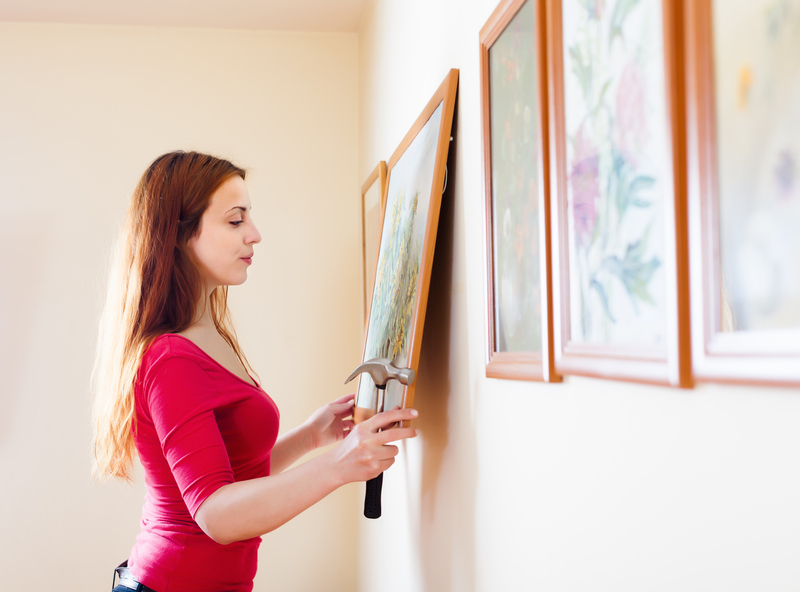Expert Tips for Moving Your Bed and Mattress Without the Stress
Moving is often considered one of life's most stressful events. Among all your belongings, your bed and mattress are some of the bulkiest and most essential items to transport with care. Learning expert tips for moving your bed and mattress without the stress not only preserves your investment in quality sleep but also ensures a smoother transition to your new home.
Why Careful Bed and Mattress Moving Matters
Your bed and especially your mattress are the foundation of a good night's rest. Improper handling can lead to unwanted stains, tears, or even structural damage, which might diminish comfort and longevity. Understanding proper moving techniques for beds and mattresses helps you:
- Protect against accidental damage during transportation.
- Prevent stains and soiling from dirt and weather.
- Maintain hygiene by avoiding exposure to outdoor elements.
- Ensure easy set-up at your new home.
Below, you'll find step-by-step guidance, professional insights, and stress-free bed and mattress moving tips to simplify your relocation.

Essential Supplies for Hassle-Free Bed and Mattress Moving
Before diving into the moving process, gather these must-haves for an efficient and smooth experience:
- Mattress covers or plastic bags: Provide a waterproof, dust-proof barrier.
- Moving blankets and furniture pads: Protect bed frames and mattresses from scratches or dents.
- Disassembly tools: Wrenches, screwdrivers, and Allen keys to take apart bed frames.
- Heavy-duty tape: Secures coverings and small hardware.
- Straps, ropes, or bungee cords: Hold components in place during transport.
- Packing bags and labels: For bolts, screws, and other small pieces.
- Cleaning supplies: For pre-move cleanliness and protecting furnishings.
Tip: Invest in high-quality mattress bags specifically designed for moves. These are thicker and less likely to tear than generic plastic sheeting, ensuring your mattress stays protected.
Preparing Your Bed and Mattress: Step-By-Step Guide
1. Remove Bedding and Clean Your Mattress
- Strip off all bedding, pillows, and toppers.
- Wash and pack linens separately in labeled boxes.
- Vacuum your mattress to eliminate dust mites and debris.
- Spot-clean stains with a gentle cleaner if needed, and allow to dry completely before covering.
2. Disassemble the Bed Frame
- Photograph each stage of disassembly for easy reassembly later.
- Remove slats, headboards, footboards, and side rails.
- Store bolts, screws, and small pieces in labeled plastic bags, taping them to the bed frame to avoid misplacement.
- Wrap wood or metal components in moving blankets to prevent dents and scratches.
3. Secure Your Mattress in a Protective Bag
- Slide your mattress into a fitted bag, sealing it tightly with heavy-duty tape.
- If you're moving in the rain, double-layer for extra protection.
- Stand the mattress on its side where possible; avoid folding or bending unless it's designed to bend.
Important: Never fold memory foam or latex mattresses, as this can cause permanent damage!
4. Prepare for Transportation
- Clear moving paths of obstacles, both inside your current home and at your destination.
- Measure doorways and hallways to ensure the mattress and bed frame components fit easily through.
- Plan your route, especially if you're dealing with stairs or elevators.
Moving Your Bed and Mattress: Smart Techniques for Every Situation
Using Professional Movers vs DIY
Hiring professional movers offers peace of mind, but it's not always feasible or necessary for everyone. Here's a quick comparison to help you decide:
- Professional Movers:
- Equipped with expertise and equipment to transport beds and mattresses safely.
- Offer insured services in case of accidental damage.
- Recommended for large beds, heavy mattresses, or long-distance moves.
- DIY Move:
- Cost-effective, especially for short distances or small setups.
- Gives you control over timing and handling.
- Not ideal for fragile frames or if you lack lifting help.
Safe Lifting and Carrying Practices
Proper lifting isn't just about safety - it's about avoiding extra stress (and injuries). Follow these bed and mattress moving safety tips:
- Get help from friends, especially for queen or king-sized mattresses.
- Bend your knees and lift with your legs, not your back.
- Hold the mattress upright and keep it balanced.
- Use moving straps or a dolly cart for heavy or awkward shapes.
- Take breaks and don't rush, especially on stairs or tight corners.
Transporting the Mattress and Bed Frame
- Securely position the mattress in the moving van against a solid surface to prevent flopping or sliding.
- Use straps or bungee cords to anchor it.
- Place soft materials (blankets or pillows) between furniture to protect delicate edges.
- Don't place heavy objects on top of the mattress.
- For pickups or open trailers, always cover the mattress with weatherproof material and tie it down from multiple points.
Special Considerations for Different Mattress Types
Memory Foam and Latex Mattresses
Never fold or tightly roll a memory foam or latex mattress; these types are designed to be flexible but can develop permanent damage or creasing if mishandled. Always keep them flat or on their side, and make sure to use a thick, protective mattress cover for full protection.
Innerspring Mattresses
Innerspring mattresses are structurally robust but can be damaged by sharp bends. Carry them on their side and avoid piling items on top. If possible, keep them horizontal during transport.
Hybrid Mattresses
Because hybrids combine foam and coils, they're quite heavy. Use two or more people and extra care with carrying and lifting. Always consult your mattress manufacturer or retailer for their specific moving advice.
Expert Tips to Reassemble with Ease
You've reached your new place--now what? Make reassembling your bed and mattress efficient and stress-free with these steps:
- Lay out all frame pieces and fasteners in a logical order.
- Refer to the photos you took during disassembly to guide you.
- Use the correct tools for each piece--avoid over-tightening bolts, which can strip the hardware.
- Place the mattress last, only after ensuring the frame is secure and level.
- Let the mattress air out before dressing it with fresh bedding.
Pro Tip: Take this opportunity to thoroughly clean floors and under-bed areas before final bed assembly!
Packing and Storing Mattresses Long-Term
If your move involves storing a mattress in a storage unit or for an extended period:
- Always use a clean, airtight mattress bag or box to protect against moisture, insects, and dust.
- Store mattresses flat on a raised platform (not directly on the floor) to ensure airflow and prevent mold.
- Never place heavy items on top, which can cause deformation.
- Check storage conditions--climate-controlled units are best for long-term mattress preservation.
Frequently Asked Questions: Moving Beds and Mattresses
Can I move a mattress by myself?
It's possible to move a twin or full mattress solo if you're physically capable and the distances are short. For larger sizes (queen, king), it's strongly advised to have help, as these can weigh up to 150 pounds or more and are awkward to maneuver.
Is it safe to tie a mattress to my car roof?
While commonly done for short distances, it's generally not recommended or safe. Mattresses can catch wind easily, making them prone to slipping or flying off. If you must, use strong straps, avoid highways, keep speeds low, and triple-check your tie-downs.
Can I fold my mattress?
Most mattresses, especially memory foam and hybrids, aren't designed to be folded. Doing so can break springs, damage foam, or void your warranty. Some thin foam mattresses may allow gentle folding--always consult the manufacturer's guidelines first.
What's the best way to clean a mattress before moving?
Vacuum both sides thoroughly, spot clean as needed, then allow to dry fully before wrapping. Don't use strong chemicals that might linger during storage or transport.
Do professional movers provide mattress bags or covers?
Some companies offer them for a fee or as part of their moving packages. It's wise to confirm ahead of time or purchase your own for guaranteed quality and fit.

Additional Pro Tips for a Stress-Free Move
- Plan ahead: Start preparations at least one week before your move date to avoid last-minute scrambling.
- Label everything: Especially bags of hardware and smaller frame parts for easy reassembly.
- Stay organized: Keep tools, instructions, and parts together in a designated box.
- Communicate: If you live in an apartment, inform building management for elevator or hallway access on moving day.
- Hydrate and take breaks: Moving is hard work--don't overexert yourself!
Conclusion: Moving Your Bed and Mattress Without the Stress
Moving your bed and mattress doesn't have to be a hassle. With expert strategies, top-notch supplies, and careful preparation, you can protect your investment and start fresh at your new home--rested and ready for what's next. Remember to prioritize safety, use proper equipment, and take your time. By following these stress-free bed and mattress moving tips, you'll ensure both your sleep setup and peace of mind move with you! Happy moving!